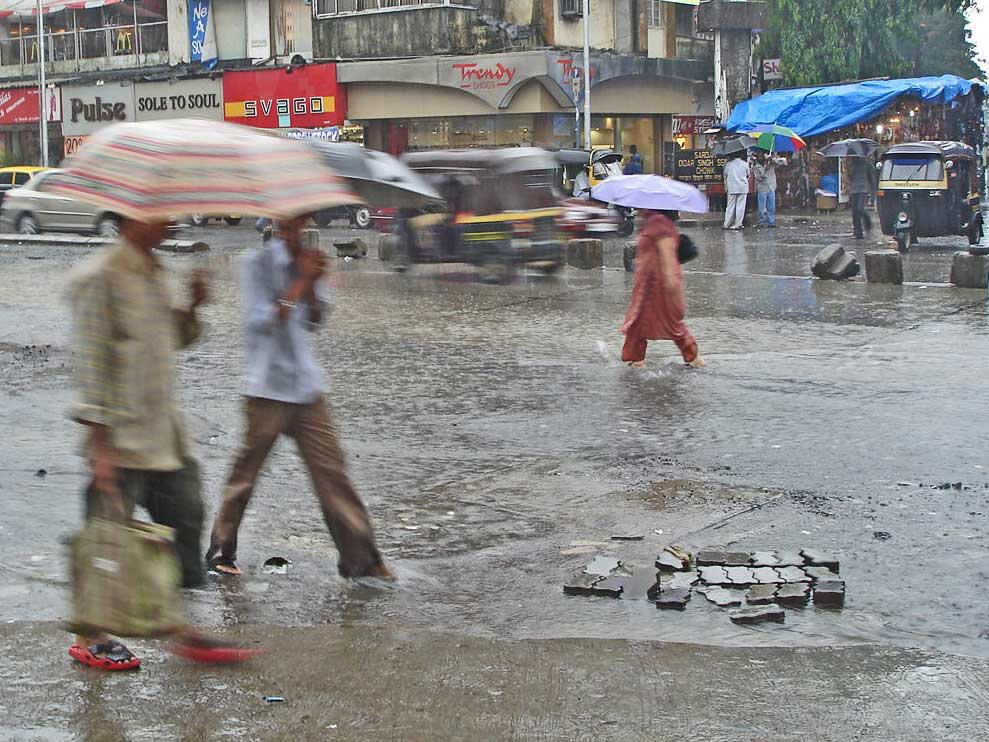On the evening of June 11, 2015, it began to rain in Mumbai, India, and it did not stop until the next day. Trains were delayed. A wall collapsed with the added weight of water. Notices were posted about the risk of landslides in hilly areas of the city. Two people died as a result of the rainfall. Yet there was a feeling of relief in the city. As a news article in the New Indian Express put it, “Mumbai smiled as heavy showers lashed the city.”
The city was smiling, so to speak, because this storm ended a long heat wave. Before the rain began, it was so hot during May that asphalt roads were melting. In many places in India, humid conditions made the heat feel much hotter. In one location, the heat index, which takes both heat and humidity into account to describe how hot it feels, was over 140°F. After the rain started, temperatures dropped as clouds shaded Mumbai from the sweltering sun. It was still warm – with high temperatures above 80°F – but was much cooler than during the heat wave. The start of rains in early June marked the end of the dry winter and the onset of the wet summer monsoon .

Monsoons produce the very wet summers and dry winters that occur on nearly all of the tropical continents. A monsoon is not a storm like a hurricane or a summer thunderstorm, but a much larger pattern of winds and rain that spans a large geographic area – a continent or even the entire globe.
Weather and climate are very different in the tropics and mid-latitudes, and it is not just a matter of the tropics being warmer. In Europe, North America, and other mid-latitude regions, temperatures undergo large changes over the seasonal cycle; weather events in these regions last a few days as high- and low-pressure systems drift slowly eastward, rearranging the locations of warmer and colder air masses as they go. This might make it cool and rainy one day and warm and sunny the next. In contrast, tropical temperatures don’t change much throughout the year. The seasonal cycle over tropical continents is marked by an oscillation between dry and wet periods brought about by monsoons. Weather events in the tropics – such as typhoons, thunderstorms, and other rainstorms – are actually embedded within the much larger monsoons. Billions of people live in the monsoon climates of South Asia, Africa, and the tropical Americas, and every spring they wait for monsoon rains that will end the winter dryness even though they might also cause disastrous floods. There is often too little water or too much.
Explore more: